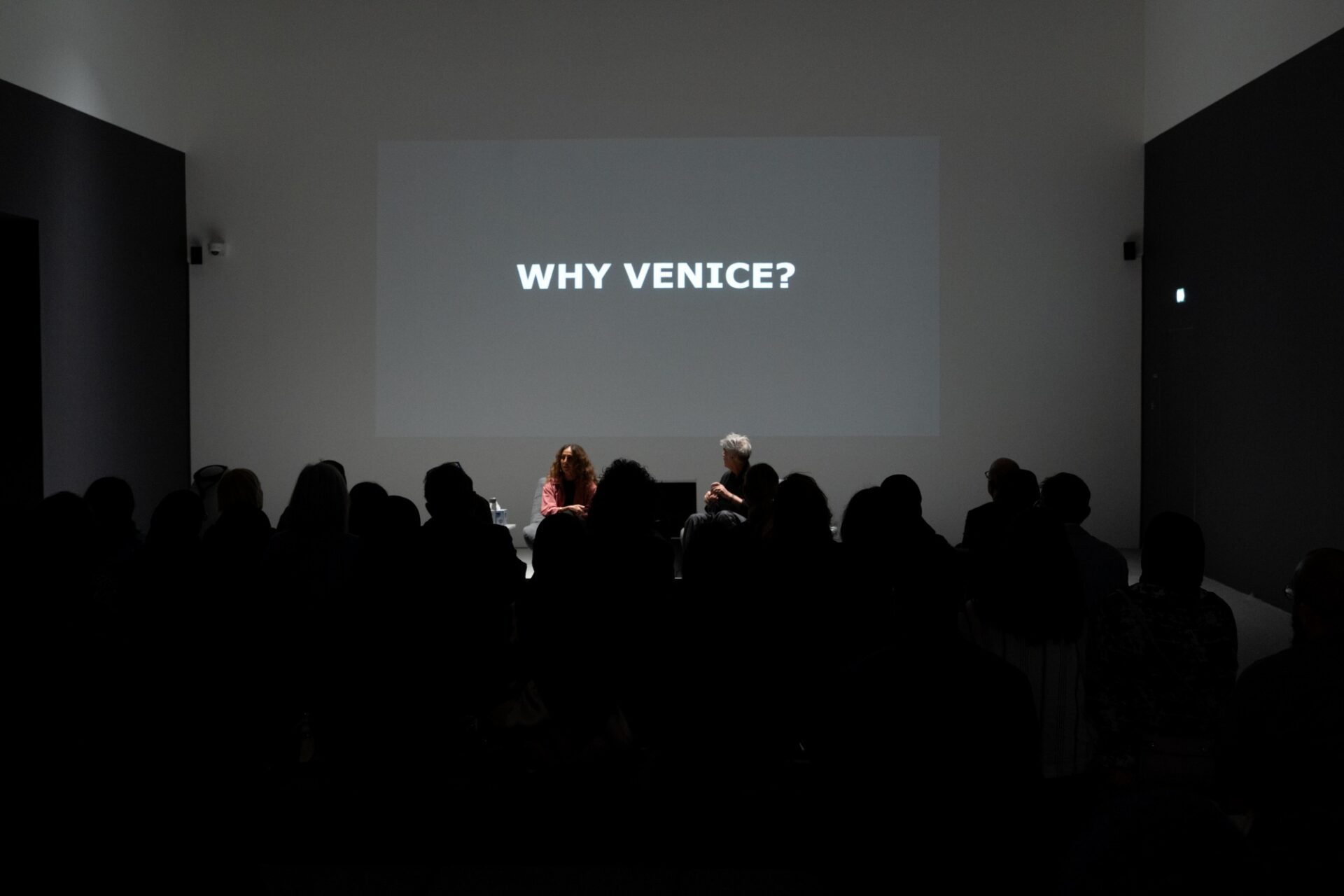Qatar Museums Launches a New Era of Architectural Dialogue
Alejandro Aravena, Pritzker Laureate and founder of ELEMENTAL and Manuela Lucà-Dazio, Executive Director of the Pritzker Architecture Prize and former Venice Biennale director open Qatar Museum’s new Architecture & Design Programming, opening a world of experimentation and learning.

Alejandro Aravena, Pritzker Laureate and founder of ELEMENTAL, and Manuela Lucà-Dazio, Executive Director of the Pritzker Architecture Prize and former Venice Biennale director at AL RIWAQ.
Qatar Museums has unveiled one of its most ambitious cultural seasons to date. The newly launched Architecture and Design – Turning Vision Into a Universal Dialogue programme signals a clear shift in the region’s architectural discourse, moving beyond exhibitions and talks to create a working space for ideas, research, and collaboration.
Held alongside I.M. Pei: Life is Architecture exhibition at ALRIWAQ, the programme gathers architects, designers, academics, and students to examine today’s architectural questions through multiple perspectives. The first public session brought together Alejandro Aravena, Pritzker Laureate and founder of ELEMENTAL, and Manuela Lucà-Dazio, Executive Director of the Pritzker Architecture Prize and former Venice Biennale director. Their discussion focused on the history and curatorial strategy of the Venice Biennale, and the evolving role of institutions in shaping architectural thinking.
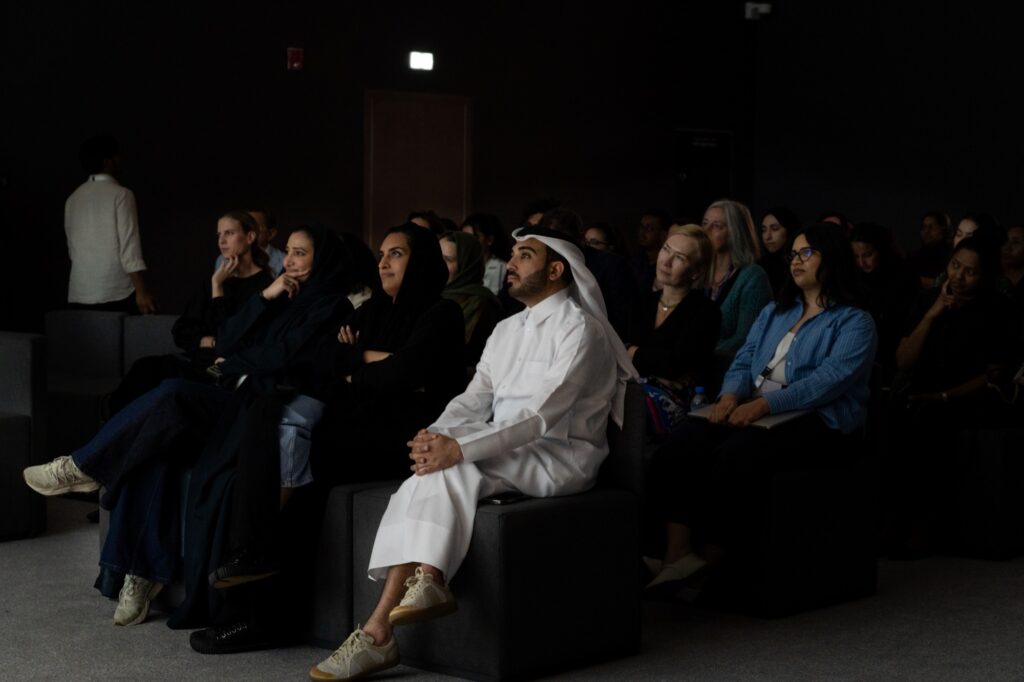 Their conversation, open, grounded, and informed by decades of practice, outlined the direction Qatar Museums hopes to build this season.
Their conversation, open, grounded, and informed by decades of practice, outlined the direction Qatar Museums hopes to build this season.
Why the Biennale Matters; And Why Qatar Belongs in The Conversation
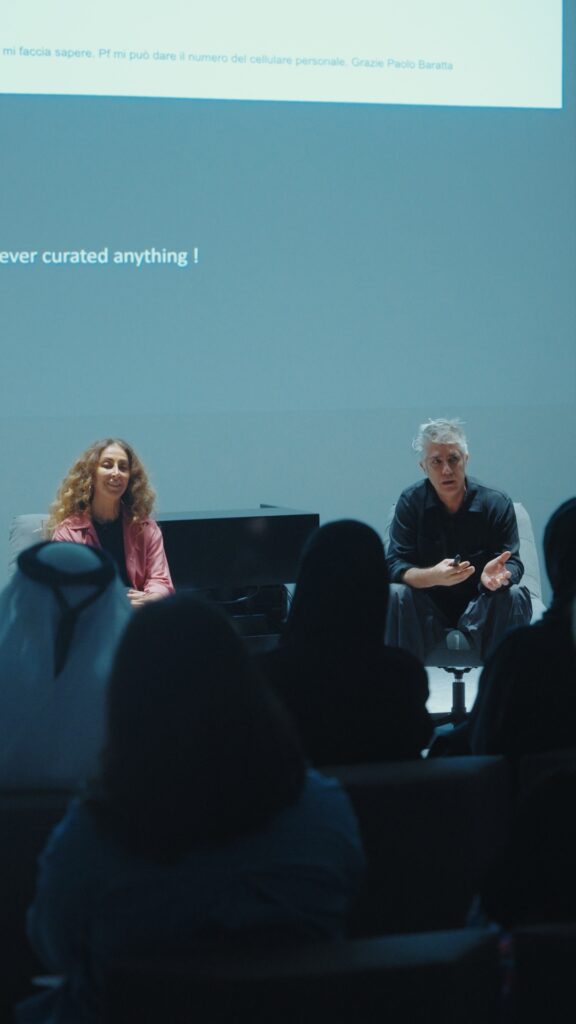 Speaking from her decades of experience at the Venice Biennale, Manuela Lucà-Dazio emphasised the role of global platforms in bridging cultural, political, and geographic distances.
Speaking from her decades of experience at the Venice Biennale, Manuela Lucà-Dazio emphasised the role of global platforms in bridging cultural, political, and geographic distances.
“Institutions like the Venice Biennale are meant to be platforms for cultural exchange,” she said, “The whole history of the Venice Biennale shows the importance of a common ground for artistic and cultural exchange and the importance of cultural diplomacy to overcome even political divergences.”
Her description of the Biennale’s Giardini felt particularly relevant here as Qatar will soon have its own permanent pavilion, a milestone that places the nation firmly within the architectural and cultural geography of Venice.

Qatar is building its first permanent pavilion at the Giardini della Biennale in Venice, designed by architect Lina Ghotmeh.
A permanent pavilion is more than a structure, it is a declaration of presence, continuity, and creative sovereignty. It signals that Qatar is not merely participating in global conversations but contributing to them with its own architectural identity, its own questions, and its own lens on how cities and cultures evolve.
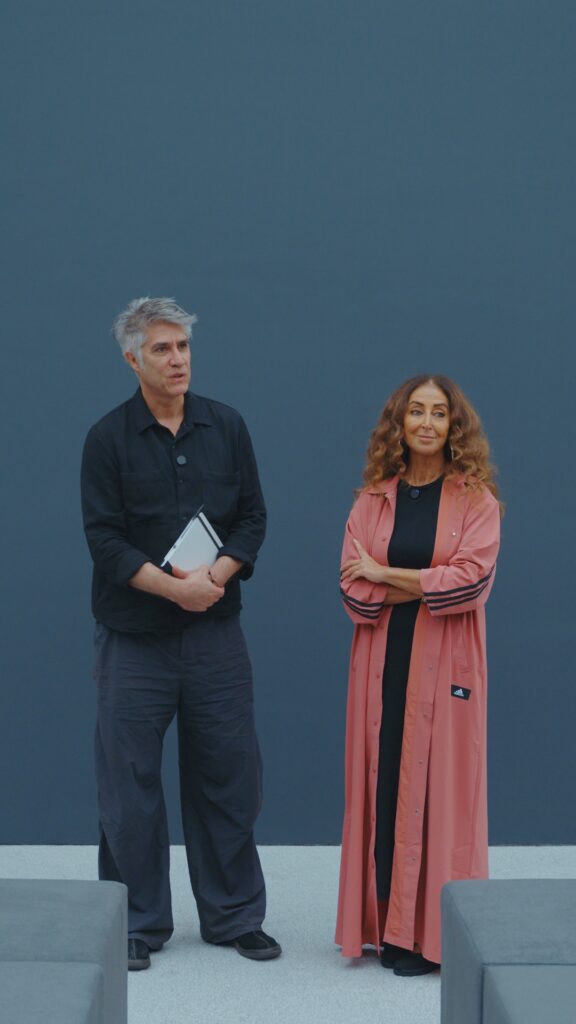 For a country that has invested deeply in defining its cultural voice, the pavilion designed by Lina Ghotmeh, is a natural and symbolic extension of its growing influence.
For a country that has invested deeply in defining its cultural voice, the pavilion designed by Lina Ghotmeh, is a natural and symbolic extension of its growing influence.
And it is this sense of cultural diplomacy through art that Manuella stresses on as she refers to the country pavilions at Giardini which often exchange in dialogues even when political differences might exist.
“You see country pavilions, the most distant ones from all points of view, being sometimes even physically together next door, and being able to exchange, to be in a dialogue, to propose their own perspectives in ways that shape political and cultural discourse, sometimes in ways that real political discourse cannot,” she stresses.
It is this spirit of proximity, plurality, and shared space that Qatar Museums aims to replicate by rooting it in the region’s own narratives.
A Shift in Global Perspective: Looking From the “Majority World”

Alejandro conducting the workshop.
Alejandro also spoke powerfully about the shift in global cultural geography; a theme deeply aligned with Qatar Museums’ strategy.
“I don’t see it that different and applied to my own region coming from South America. When we tend to see from the corner of the world as the culture being produced in centres that are elsewhere, not where we are
“We tend to see culture being produced in centres that are elsewhere,” he said, referencing his own upbringing in South America.
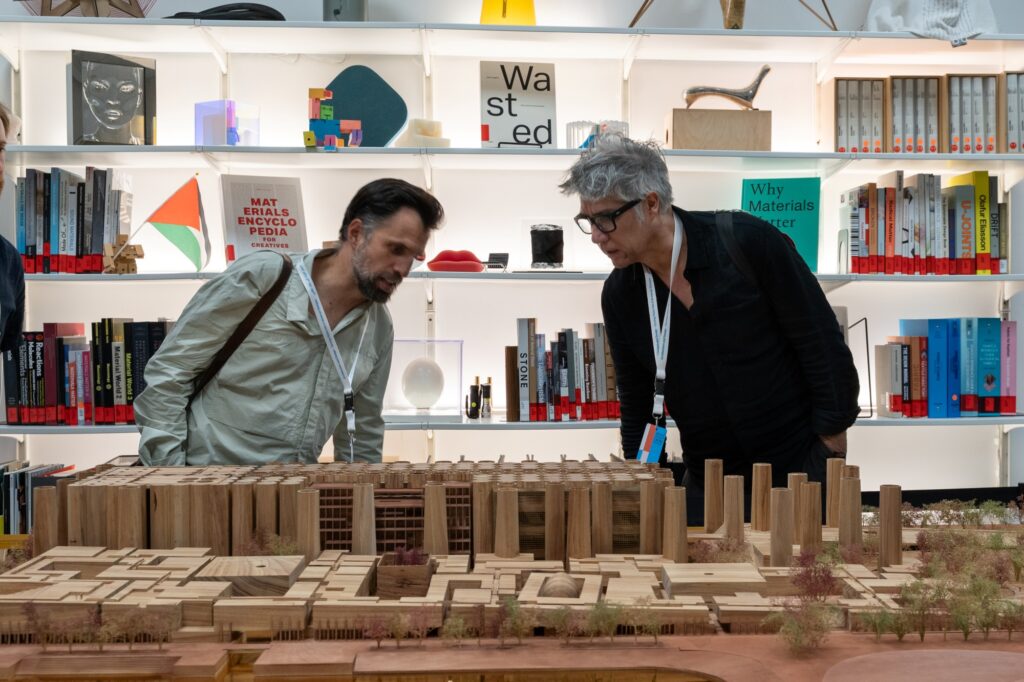
Elemental Workshop/ The Art Mill Museum model can be seen in the foreground.
“But the moment you have the presence of such regions; it might be a reversal of paradigm, because the majority of the planet has to be built with the same constraints and circumstances we live with.”
Seeing strategies, knowledge, and tools emerging from the MENA region, Alejandro noted, creates a sense of solidarity across the so-called “majority world” while he calls Europe, the US or let’s say the global north as an exception.
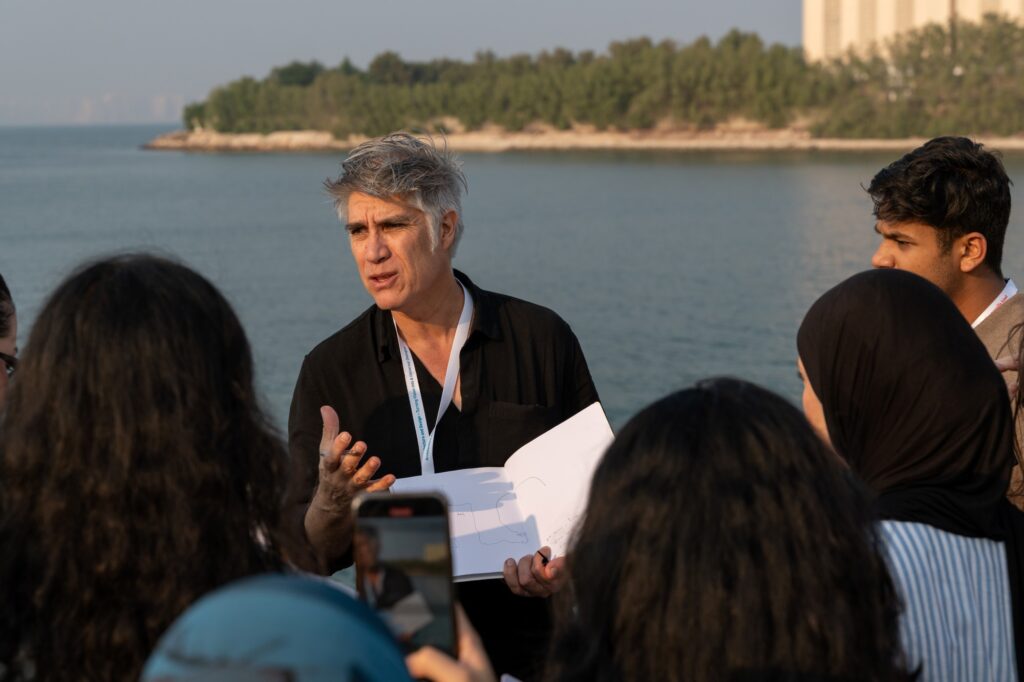
Site visit to Qatar Flour Mills, the site for the Art Mill Museum.
“The majority of the planet has to be built with the same constraints and circumstances we live with and to see strategies, knowledge, tools coming from this region for me, it makes us all feel that you are not alone in that attempt to improve the quality of life through the built environment with a different approach, not the one that we have been used to throughout history,” says Alejandro.
This is precisely why Qatar’s voice, through architects, students, and cultural institutions—matters on global platforms.
Why Doha Is the Right Place for This Conversation
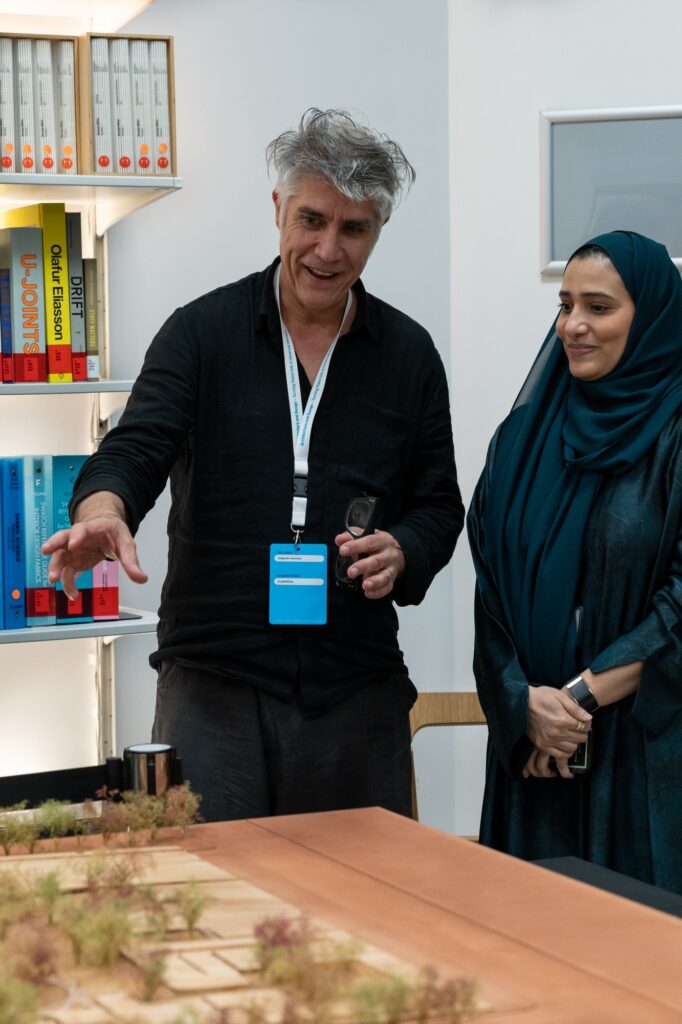
Alejandro with Sheikha Reem Al Thani, the Acting Deputy CEO of Exhibitions and Marketing and the Director of Centralized Exhibitions at Qatar Museums (QM)
When asked about the importance of hosting such architectural discourse in Qatar, Manuela drew a parallel between regional representation at global platforms and global conversation happening locally.
“From my point of view, it is not different from what we were just discussing about the presence of countries from the MENA region. If you think of it, it’s the same perspective, the other way around,” says Manuela, “So, the relationship between the global and the local dimensions, is a key to not only to understand our world, but also to move on. And I think this is extremely important that the global discussion arrives here in Qatar and can be staged, can be implemented in a perspective that is the perspective of this country and of this region. Sometimes, I think it’s important, precisely like what Alejandro was saying, it’s important to shift the cultural perspective, but also the geographical perspective.”
This is at the heart of the new QM programme; global ideas built through local lenses. Local questions posed to global experts. A cultural exchange that flows both ways.
Workshops as Risk, Discovery, and New Knowledge

Students and professors at VCUarts Qatar with Alejandro and Sheikha Reem Al Thani
During the first module, the Architecture programme offers a dynamic blend of international architectural dialogue and hands-on creative exploration. Complementing the discussion, the workshop invited participants to develop innovative Mashrabiya and Brise-soleil concepts, rooted in the future Art Mill Museum project, by blending local design traditions with climate-responsive practices, culminating in conceptual and physical model creation.
The season is designed around hands-on workshops with institutions like Hamad Bin Khalifa University, Qatar University, Department of Architecture and Urban Planning, Virginia Commonwealth University School of the Arts in Qatar, the American University in Cairo, the American University of Beirut, the American University of Sharjah, Southern California Institute of Architecture, Chinese University of Hong Kong, Kharkiv School of Architecture, and Università Iuav di Venezia and the programme fosters cross-cultural dialogue and collaborative research, empowering emerging talent and advancing the future of global architectural practice. For Manuela, workshops are not simply technical sessions, they are essential to the creative process.
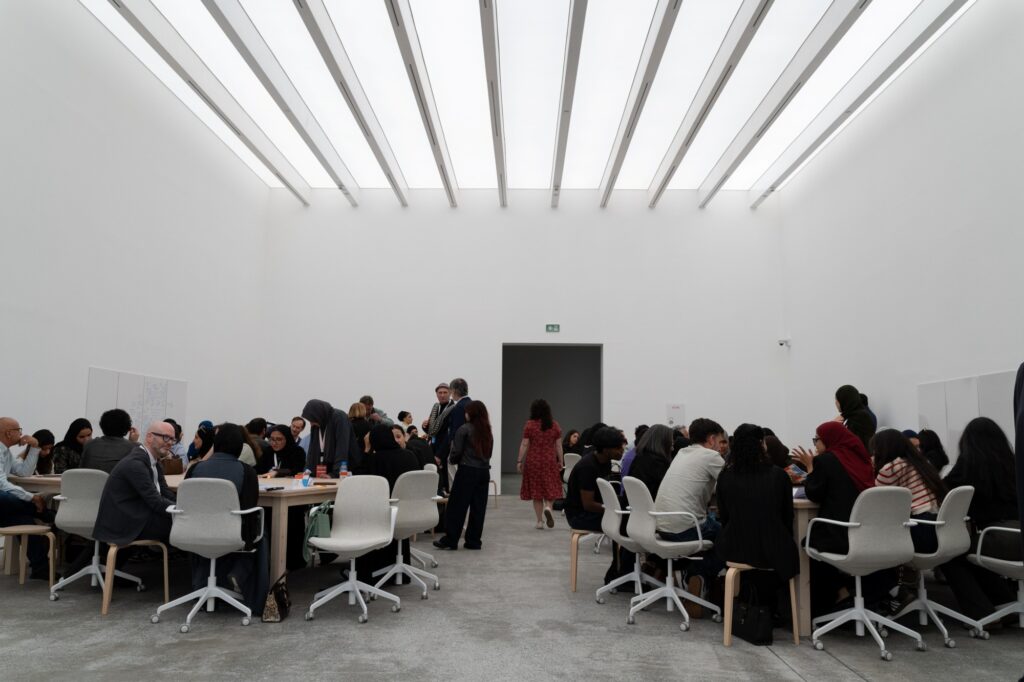
“You learn by doing,” says Alejandro, Scenes from an ongoing workshop with the students of VCUarts Qatar at Al Riwaq.
“The word workshop is associated with practical issues. You learn by doing,” Alejandro explained.
“But the workshop also has a dimension of risk. You don’t really know what’s going to be the outcome, and that jump into the void is inherent to the creative disciplines.”
The workshops with the students give you an understanding that today’s challenges, from housing to climate to city-making, demand experimentation, collaboration, and humility.
“You come with students together in front of the blank page and risk. That is a way to exchange knowledge that is very relevant whenever you don’t really know the answer.”
And indeed, architecture today rarely has easy answers.
A Season Shaped by Questions, Not Conclusions
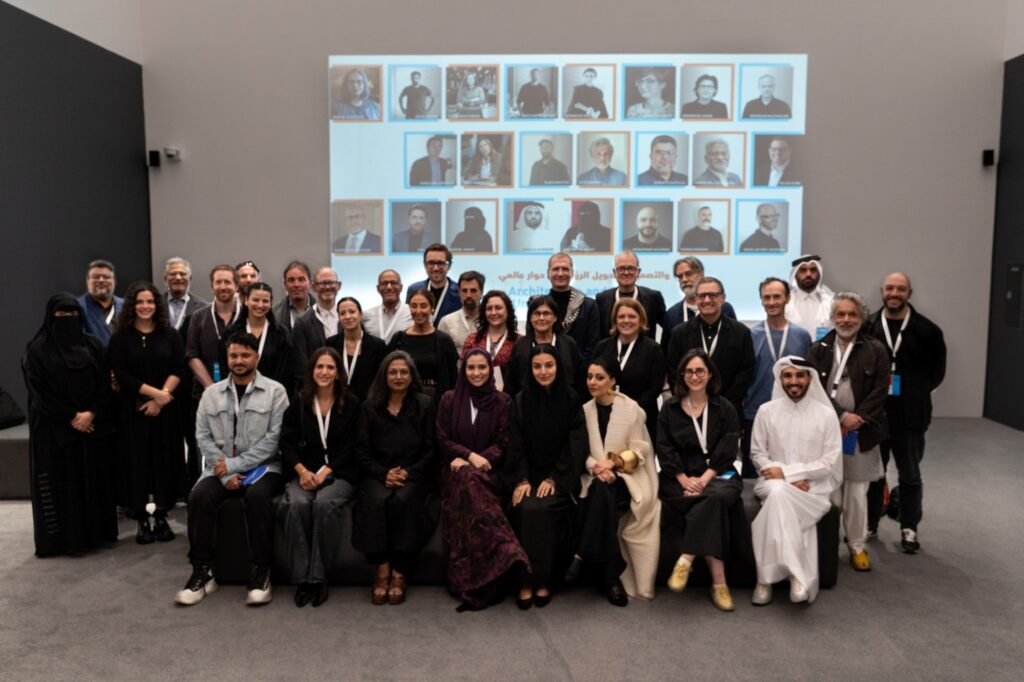
Round Table 1, with prominent architects like Sumayya Vally. Marina Tabassum with the VCU arts faculty members and QM leadership.
The wider programme draws on global experts including Aric Chen, Sumayya Vally, Ben van Berkel among others. Together, they interrogate topics ranging from adaptive reuse and cultural preservation to regional materiality and future cities.
According to QM, the programme challenges participants to consider how architecture may safeguard heritage, champion innovation, and respond to the complexities of a rapidly evolving world.
In other words, the goal is not to deliver answers, but to cultivate better questions, something Aravena has often argued is the real success of any architectural exhibition.
This new QM programme, rooted in education, collaboration, and experimentation, signals a decisive moment in how Qatar engages with global architectural discourse.
Qatar is doing exactly that: creating a space where local context is the starting point and not a footnote.
All Images Courtesy Qatar Museum

